
Of 18 batteries tested, 7 didn’t need repair or replacement and only 3 batteries passed the testing without issue: Sony Fortelion, Samsung AIO, and Pylontech. Sony was the best performer by my reckoning.
Good news! The Canberra Battery Test Centre have released their 7th report. I admit I’m a little behind in reporting this because it wasn’t released this month, or last month, or even the month before that. It came out all the way back in September. But it’s their fault I’m so late writing about it. They normally take eight months to put out a report, but this time it only took them four months. I was shocked, shocked I tell you! And you may be shocked too when I reveal that of the 18 battery systems tested so far only 7 didn’t need to be repaired, replaced, or buried at midnight under a crossroad.
Just how shocked you are by this probably depends on whether or not you’ve kept up with their previous reports. If you’re familiar with them then it’s no surprise that all is not well in home battery land:
- Worrisome Results From Canberra’s Battery Test Centre
- Canberra Battery Test Centre Update — BYD Battery Comes Out On Top
- 6th Canberra Battery Test Centre Report — 61% Of Tested Batteries Faulty
As two article titles above indicate, the reliability of tested batteries has been dismal. Also, the good news about the BYD battery was premature. While it has done better than most simply by not breaking down, its rate of degradation has increased and is unlikely to remain above the minimum capacity promised by its warranty.
In this article I will:
- Cover the horrible failure rate of tested battery systems.
- Present the latest information on battery degradation. After all, it is important to provide you the most up-to-date, four month old information.
- Point out batteries may occasionally fail to provide anywhere close to the kilowatt-hours they should be capable of.
- Rank the tested batteries in my own personal “Black Knight” system.
- Show the estimated DC to DC round trip efficiencies for batteries as well as an impressive 90%+ estimate of AC to AC round trip efficiency for the Powerwall 2.
- Show how home batteries have failed to get cheaper.
- Tell you which batteries will be in the upcoming 3rd round of testing.
44% Of Original Batteries Dead Or Replaced
So far, out of 18 original batteries tested, only 8 have either made it to the end or are still undergoing testing, without needing to be replaced. This survival rate of only 44% is atrocious and may get worse if any remaining ones die.
Of the 8 survivors, 7 have either reached the end of testing or are still operating now without breaking down, while one needed a faulty battery cell replaced soon after commissioning.
This chart from the report, which I compressed to make more readable, shows the dismal reliability of the tested batteries. The main thing you need to know about this chart is everything in red is bad:
While this chart makes it clear home battery reliability was atrocious, things are worse than they appear because it only shows faults and breakdowns and not excessive battery degradation.
Only 17% Didn’t Break Down Or Greatly Degrade
Of the 7 batteries that didn’t break down, one — the GNB PbA — was lead-acid and so its performance is not directly comparable to the others. The test centre did have problems with this battery that prevented them from correctly estimating its state of charge. But the fact that it worked when 44% of the more exotic competition needed replacing might explain why many off-grid installers still recommend lead-acid.
Of the remaining 6, which were all lithium batteries, only three suffered battery deterioration I call acceptable. I define acceptable degradation as being on track to remain within the minimum promised by their warranties.
Of the 18 batteries tested, the Centre was only able to get good capacity degradation — or capacity fade — results for 7. I’ve put the graphs of their deterioration from the report below and underlined the names of those that didn’t break down in red. Here are the 3 from their first round of testing:
The Tesla Powerwall 1 had the worst performance of the three that made it onto the graph. But, on account of how it operates, its testing conditions were harsher than for the other batteries. While I suspect its deterioration wouldn’t have been as bad if conditions had been identical to the other lithium batteries, I doubt it would have come close to the other two, of which the Sony Fortelion is the clear winner. (I’d say ‘the Sony Fortelion and won‘, but only because I enjoy inflicting excruciating pun pain on people.)
Below is a graph of the deterioration of 4 batteries from their 2nd phase of testing. Again, I underlined in red the names of the batteries that managed to not break down:
Only the Pylontech battery did very well. The LG Chem RESU HV battery is doing the next best, but it has only been cycled a little over 600 times. This is because the original LG Chem RESU HV died and needed to be replaced and so testing had to start from the beginning. Provided it doesn’t increase its rate of deterioration as the BYD battery did, it should remain within the minimum of 60% of its original capacity provided by its warranty.
Your Battery May Lack Charge When You Need It
The Battery Test Centre charges lithium batteries over 3 hours, discharges them over 3 hours, and then gives them a couple of hours rest before doing it again. This way they can simulate 3 years use in a single year. The batteries should be able to fully charge and discharge in the time given, but a strange thing about all the tested battery systems is they will often discharge much less than expected. For example, here is a graph showing watt-hours (to get kilowatt-hours divide by 1,000) discharged by the Samsung AIO battery system:
Most of the time the amount of energy discharged is close to what I’d expect, but often it’s far less. And for one discharge the battery provided no energy at all. On the other hand, one time it appeared to supply more energy than it should be able to hold according to its nominal capacity. (I added the bits in blue that point these events out.)
This graph for the Tesla Powerwall 2 also shows the problem, although in this case it’s always able to discharge at least 2 kilowatt-hours:
This inadequate output behavior isn’t limited to lithium batteries as the zinc-bromide Redflow ZCELL does it too:
Not only does this battery have a completely different chemistry, its testing conditions are also different as it’s only cycled twice a day instead of three times as lithium batteries are.
I thought the ambient temperature might be responsible, as it is altered to simulate real life conditions, but I can’t see how poor output lines up with temperature changes.
The good news is so far Finn hasn’t noticed his Powerwall 2 doing this and no one has complained to me yet about their battery occasionally falling on its arse and only being able to discharge a fraction of the energy expected. It is possible the problem is due the rapid cycling done in testing and may be reduced or even disappear in actual use. Measurement error could also be involved. Because of the uncertainty I haven’t taken occasional poor output into account when ranking the home batteries in my personal rating system.
My Black Knight Battery Rating System
To impose some order on the battery test results I have used my not at all patented “Black Knight” rating system, which is based upon this Black Knight here:
This brilliant ranking system I’ve devised has 4 levels into which I will place all 18 tested batteries. Note a considerable number are no longer available as they have either been superseded by newer models or their manufacturers have retreated from the home battery market.
1. Thou Shalt Pass
Batteries in this first category worked as they were supposed to. That’s all. They passed the bare minimum standard of not breaking down and not degrading so rapidly they’re unlikely to stay in warranty. In other words, they worked like they were supposed to. The 3 passable home battery systems — only 17% of the total — are:
Sony Fortelion: With no breakdowns and its capacity estimated to be 83% of its original amount after 2,100 full cycles1 this is the best performing home battery of all tested.
Samsung AIO: This is an all-in-one system, which means there is more that can break down, but it didn’t suffer any faults and its capacity was estimated at 79% after 2,160 full cycles. (Note the Hansol AIO is this unit with a name change.)
Pylontech: Its testing isn’t complete, so it could still fail, but its estimated capacity is 86% after 1,470 full cycles.
2. Tis But A Scratch
These batteries have either broken down or it appears they will degrade beyond what their warranties allow. But in the case of breakdowns the problem was quickly rectified by the battery provider and for degradation it appears possible the battery could remain in warranty if used under real world conditions.
LG Chem RESU HV: This battery needed to be replaced and testing restarted. Its capacity is estimated to be 90% after 620 full cycles. If this rate of decay is maintained it will just, barely, stay within warranty.
Tesla Powerwall 2: This battery arrived with a fault and later developed another that resulted in its replacement. Its capacity is estimated at 96% after 640 full cycles. If this decline is maintained it will stay well within the minimum capacity provided by its warranty.
Tesla Powerwall 1: With no breakdowns and harsher testing than other home batteries, the Powerwall 1 has done well with a capacity of 64% after 2,190 full cycles. Unfortunately, at this rate of decay it would be at 50% capacity by the end of its warranty rather than the minimum of 60%. But it is likely its deterioration would not have been as great if tested under identical conditions to the other lithium batteries.
3. Disarmed
These home batteries had terrible problems but, like the Black Knight, struggled on in spite of adversity/stupidity, or they did not continue testing and so I don’t know if they would perform well enough to go into the category above.
BYD: While not breaking down, battery deterioration worsened after a good start and its capacity is estimated at 64% after 1,740 full cycles. Unless this comes to a miraculous halt it will not come close to staying within the 60% minimum promised by its warranty.
Alpha ESS: When exposed to temperatures that simulated summer conditions this battery had difficulty charging and discharging. Testing was stopped early and did not continue. Due to a lack of information it gets it gets the “disarmed” rating. This model of battery is no longer used by the Alpha ESS.
Calb CA 100: One faulty cell needed to be replaced after installation. There were problems with its battery management system but it continued to operate until the end of testing. Its estimated capacity was 76% after full 1,500 cycles. At this rate it would be 60% after 2,500 cycles. It did not have a long term warranty, but if it had a warranty equal to that of the LG Chem batteries and its decline did not accelerate, then its capacity would remain within it.
Ecoult Ultraflex: This suffered a fault and was replaced. Then it suffered and another fault and broke down. It was to be replaced but that didn’t occur and testing ended leaving us short on information.
GNB lead-acid: This battery proved difficult to charge and discharged due to voltage fluctuations. They were not able to accurately measure the remaining capacity of this battery, but it continued to operate until the end of its testing.
GNB Lithium: While not breaking down, its capacity fell to an estimated 65% after only 1,190 full cycles. This is terrible. Some odd test results suggests a fault may be preventing the full capacity from being used.
Kokam Storaxe: The Kokam Storaxe died relatively early in testing and was not replaced.
LG Chem LV: This often shut down at warmer temperatures that simulated summer conditions. It suffered from a cell imbalance that required it to be replaced, at which point its capacity was estimated at 78% after 1,183 full cycles.
Redflow ZCELL: This battery has had a disastrous run and has been replaced 4 times so far. But Redflow refuses give up and the 5th unit is now being tested. Because of this, I grant them the special Black Knight perseverance award. Due to its zinc-bromide chemistry its capacity does not decline.
SimplifiPhi: These batteries, used by the US military, developed problems and rather than replace them, SimpliPhi refunded the Battery Test’s Centre’s money, leaving us short on information about their performance.
4. Haven’t Got A Leg To Stand On
Ampetus: At first this battery was difficult to install, then the company that supplied it went out of business, and then the battery died. Ampetus, thou did not pass.
Aquion: They could not get this battery to work and Aquion has gone bust. For never providing a single watt-hour of stored power, Aquion gets the special Black Knight, “All right, we’ll call it a draw then,” award.
A Large Manufacturer Does Not Guarantee Reliability
Only 3 battery systems fell into the first category of Black Knight ranking, which simply means they worked as they should have. Two of the manufacturers, Samsung and Sony, are large well known companies while the third, Pylontech, isn’t famous enough to have a Wikipedia page but is regarded as a quality manufacturer.
Other big name companies were unable to provide problem-free home battery systems. Both of LG Chem’s batteries needed to be replaced and BYD’s battery is suffering from excessive deterioration. Redflow, producer of the zinc-bromide ZCELL, is not a very large company but has a great deal of experience making batteries for telecommunications and other purposes and I never expected them to have the multiple setbacks their home battery has experienced.
Clearly, purchasing from a large and/or experienced battery manufacturer is no guarantee of problem-free operation. But a large, financially sound organization is unlikely to go under if they have a bad run of batteries and can generally be prodded into following Australian Consumer Law so they’ll replace or repair faulty home batteries.
Round Trip Efficiencies
Here is a table showing the round trip efficiencies for 9 of the batteries. This is what percentage of energy put into a battery can be taken out again. For 8 it only shows the DC to DC efficiency. Batteries charge and discharge using DC power but our homes use AC, so in actual use the round trip efficiencies will be significantly worse. The one exception is the Tesla Powerwall 2 which has an AC to AC round trip efficiency of just over 90%. This is an excellent result given that Tesla’s official figure is 88% and when my boss, Finn, tested his Powerwall 2 he only got a figure of around 85%.
The Samsung AIO has an excellent result for DC to DC efficiency, while the BYD B-Box does very well. Because the Redflow ZCELL is zinc-bromide and not lithium it does much worse than all the others, but has the advantage that its capacity won’t deteriorate over time.
Home Batteries Aren’t Getting Cheaper
The report has a table showing wholesale battery prices have hardly budged for around 3 years now:
They don’t actually give the names of the batteries, so detective work is required if you want to determine which is which.
The report mentions capacity constraints for battery manufacturers as a reason for the flat lining of solar battery prices, but there are two other factors that are probably of greater importance to Australians:
- The Australian dollar is 11% weaker than 2 years ago and all lithium battery packs, as well as Redflow’s ZCELL zinc-bromide battery, are made overseas.
- By increasing demand, South Australia’s large battery subsidy may have contributed to manufacturers deciding to delay competing on price.
Another reason, likely to be the most important of all, is the Battery Test Centre has shown it’s obviously very bloody difficult to make reliable home batteries. Even giant companies like LG Chem, BYD, and Tesla haven’t been able to provide the test centre with systems that are failure free and overall the tested battery systems have proven to be about as reliable as a Swiss cheese condom.
While these big companies have all benefited from dramatic declines in costs — large electric car manufacturers now paying around $150 per kilowatt-hour for lithium battery cells — I assume they’ve all been stung by how difficult it is to actually get them to work reliably in a home battery system and have kept prices high to help cover the costs of massive failure rates.2
3rd Round Of Testing Coming Soon
The Canberra Battery Test Centre has announced they will test another 8 batteries and this will be under way by the time their next report is available, which — according to my calculations — should be in 2 months plus or minus 4 months.3 The batteries will be:
The one at the top of the list is a sodium nickel battery, which is interesting as it operates at an internal temperature of 280 degrees. I guess this means it will work just fine in a heatwave. All the other batteries are lithium, but the Zenaji Aeon is a lithium-titanate (LTO) battery; which is a type they haven’t tried out before.
Things Should Be Better Now
The performance of the 18 tested batteries has been nearly as miserable as the history of Ireland4. With only 3 out of 18 batteries actually working as they are supposed to, it definitely gives the impression you’d have to be nuttier than Mr Peanut’s family jewels to buy one.
Fortunately — while I still recommend extreme caution when buying a battery — there are a couple of reasons not to be completely pessimistic about the chances of a home battery system actually working:
- Battery testing started way back in September 2016 and battery manufacturers have put a lot of effort into improving their products since then. They obviously were very bad at this, as the reliability of batteries in the second round of testing that started a little over 2 years ago was still crap, but while progress on reliability may be stupidly slow, it is occurring.
- Battery manufacturers who are in it for the long haul have shown a commitment to replacing faulty battery systems. Or at least they have when they’re installed in a professional battery test centre. Hopefully you’ll get a similar level of service in your own home.
Another good reason for optimism is, at some point, home battery prices will come down. It’s inevitable given the low and falling cost of battery cells. Some other good news is Virtual Power Plants that aren’t complete rip offs may soon arrive, or may even be available now, and these could allow batteries to start to begin to make economic sense for homes and businesses. Fingers crossed that solar batteries will actually be able to pay for themselves in a typical Australian home soon.
Footnotes
- One full cycle is considered to have occurred after the battery has discharged energy equal to its total nominal capacity and not its usable capacity, which is less. ↩
- If you are a battery installer and you haven’t accounted for the cost of maintaining systems that may be as reliable as a rubber wind turbine, then let’s hope you’re using something better than a Swiss cheese condom, because you are going to find it hard to feed your children in the future. ↩
- As you can see, I am taking into account the possibility they will use a time machine to publish it in the past. ↩
- Wars, famines, plagues, and oppression — but no snakes. So, even more famines and plagues because there’s no snakes to eat rats. ↩

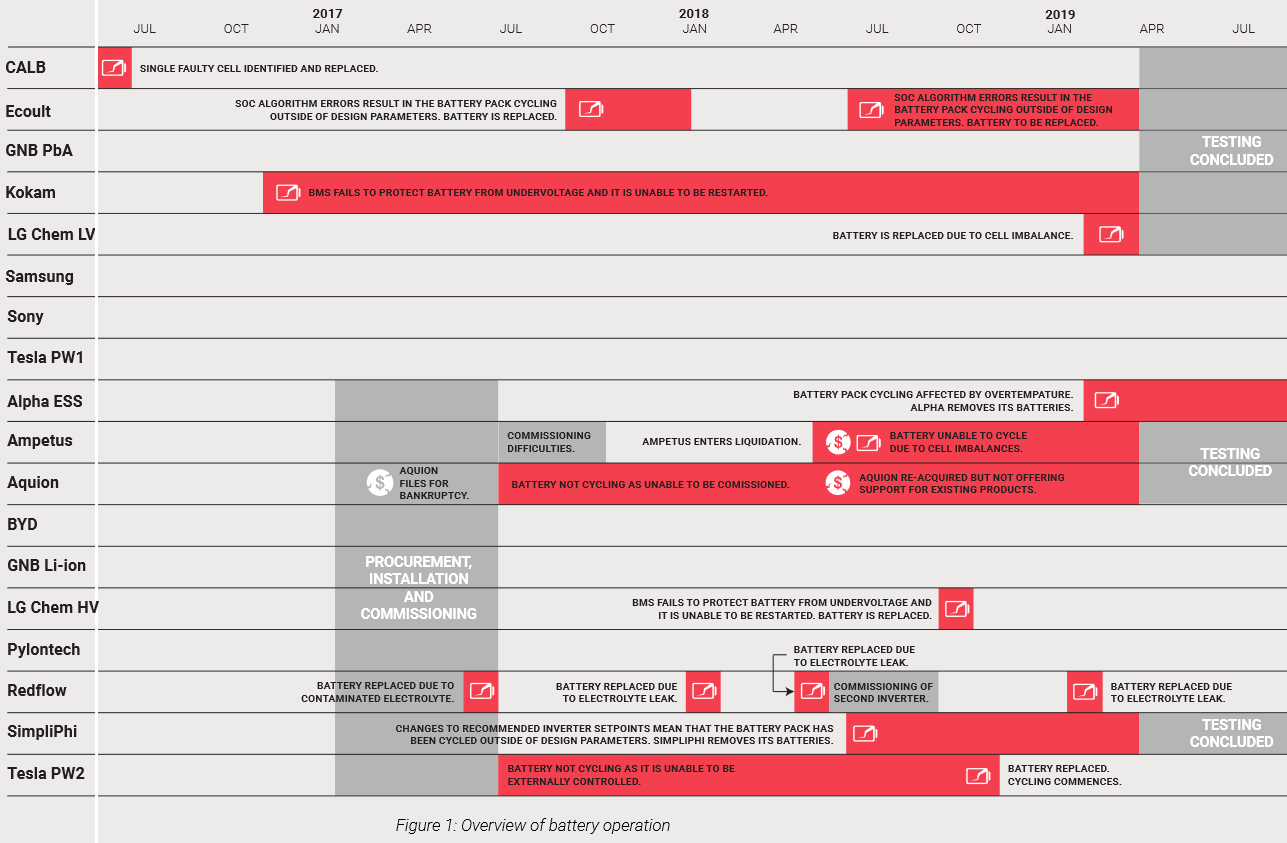
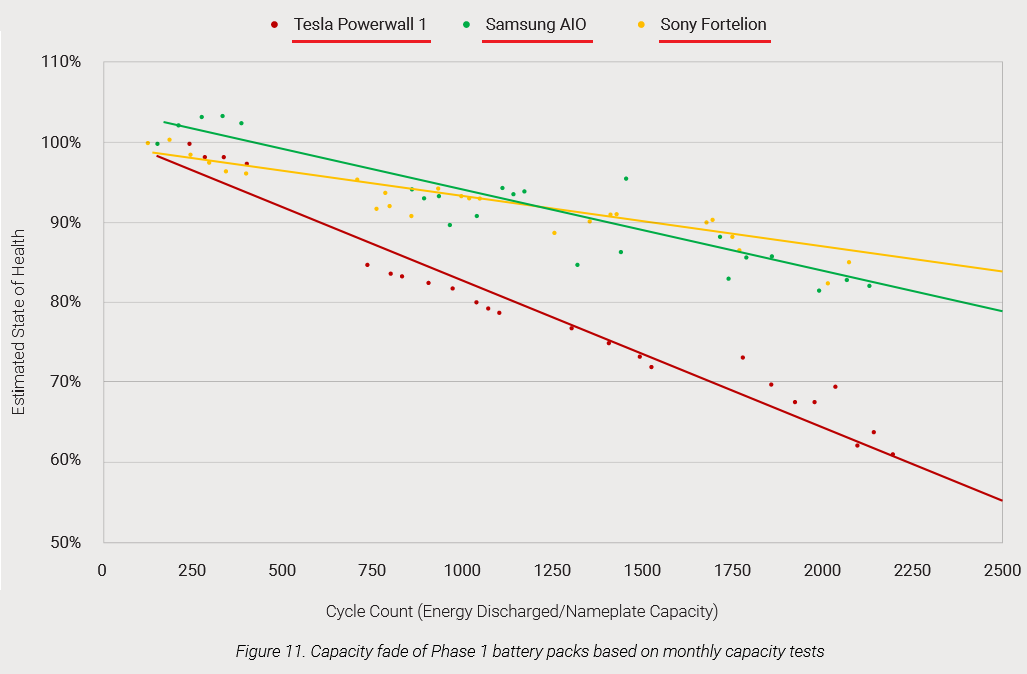
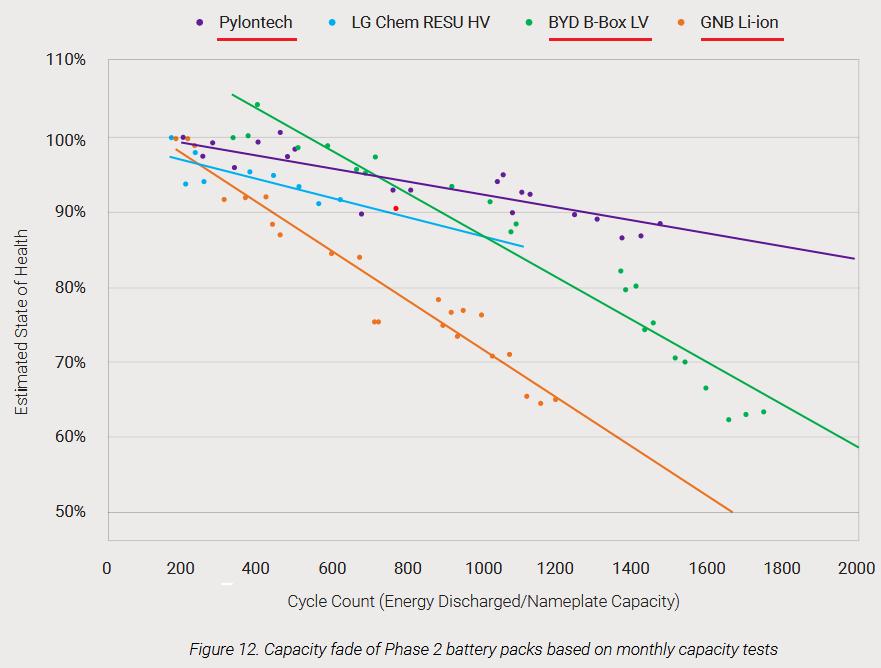
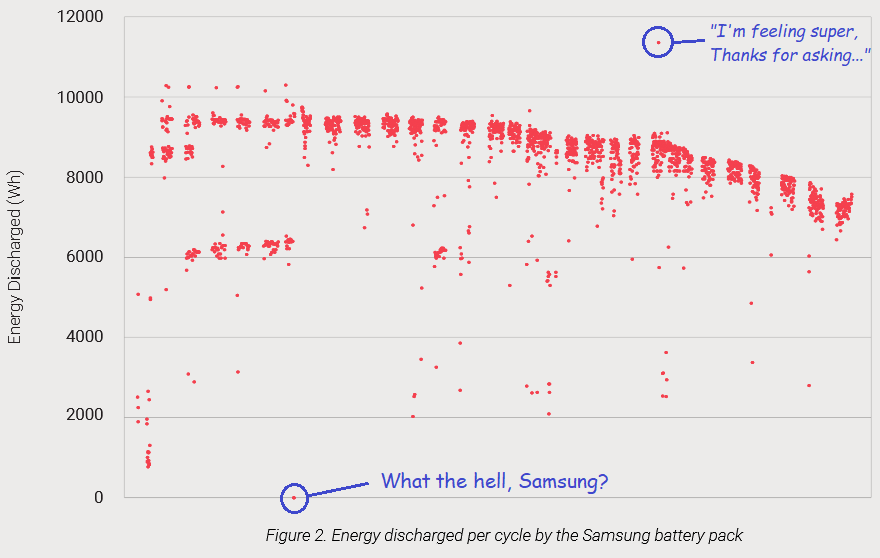
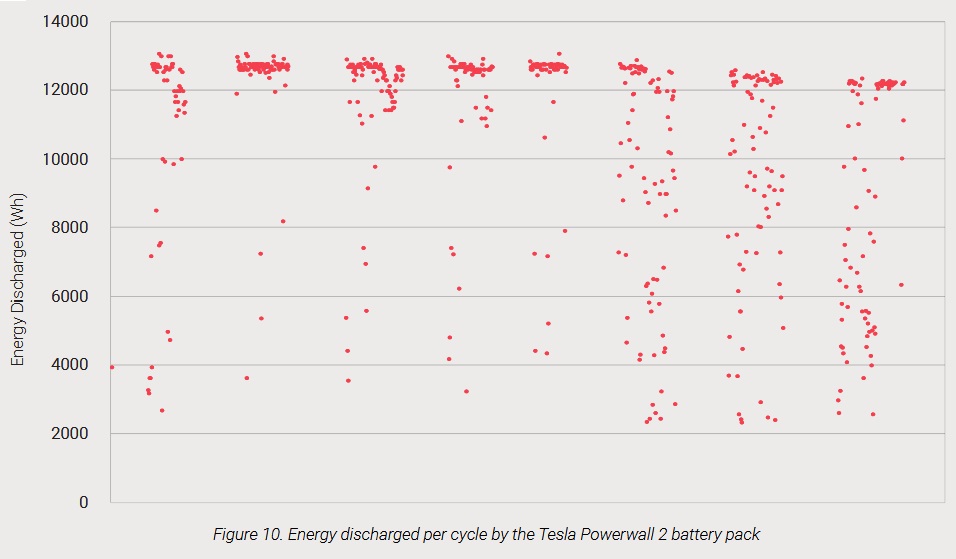
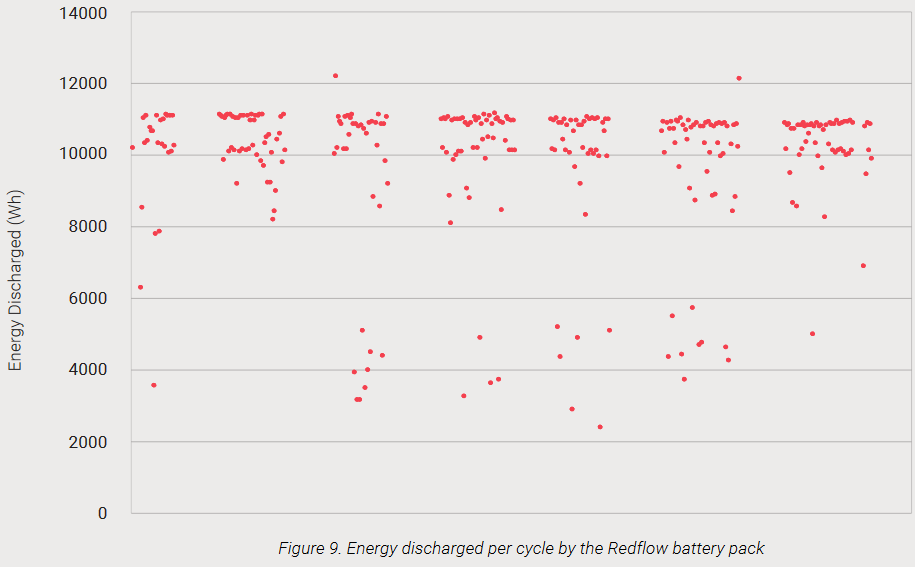




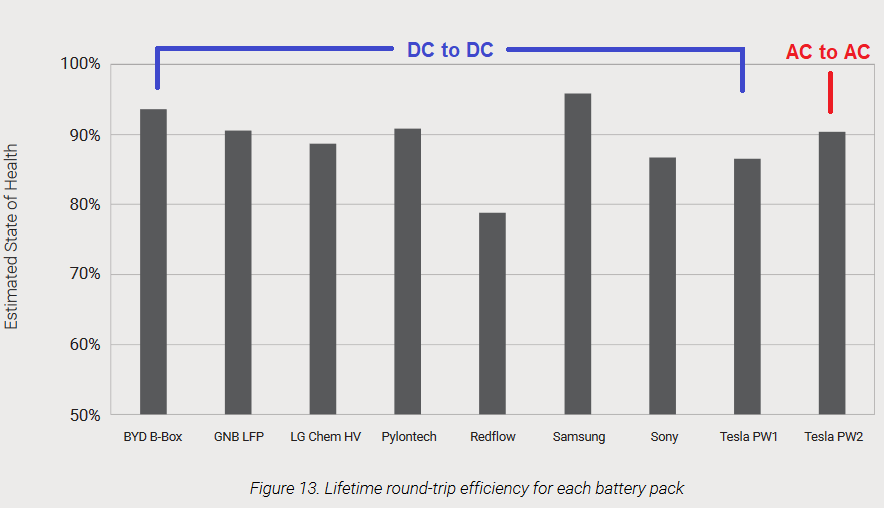
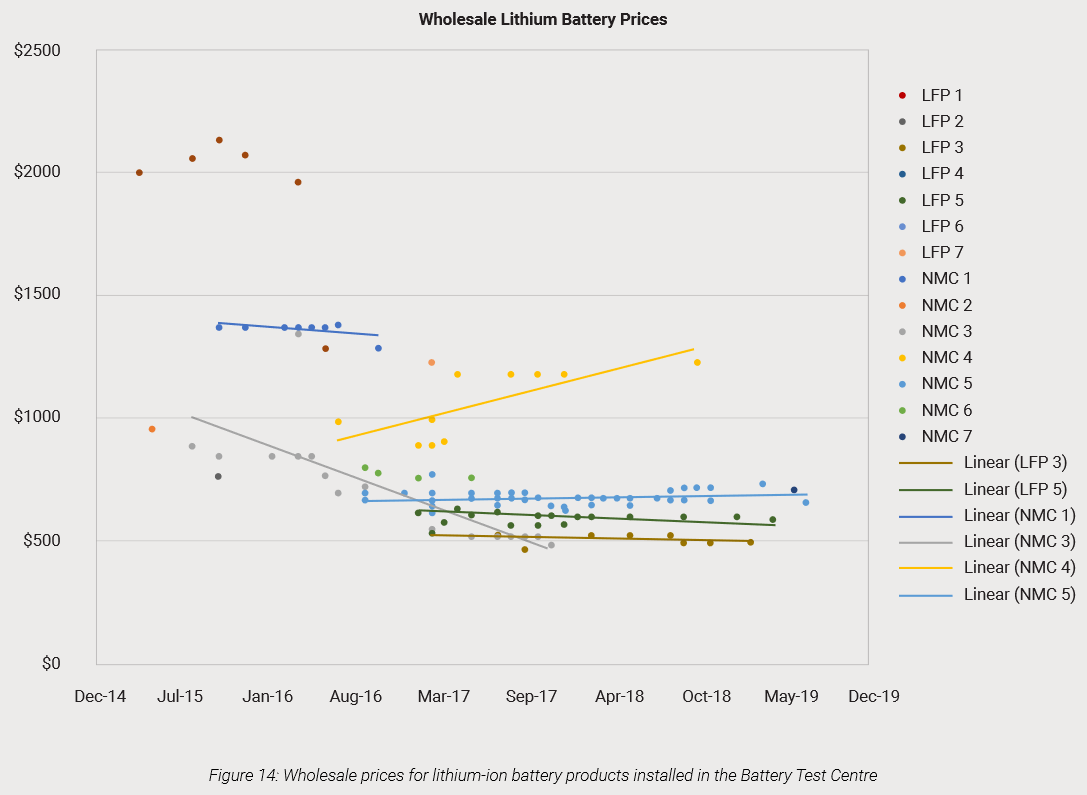
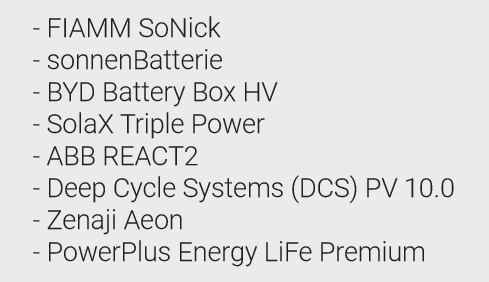
 RSS - Posts
RSS - Posts



Thanks for the info Ronald.
How does the consumer find out if their battery is potentially one of the faulty ones ? What type of technician do we need to get to check it is still within the specs promised ? Given the failure rate this may well be worth doing whilst the warranty is still current but presumably we will need to be armed with some technical evidence of the issues found after testing by a competent person.
Dear Ronald, and Finn
I enjoy your articles and the information in them.
You guys spend a lot of time “Battery Bashing”. I don’t disagree with your assessment of the tech, Holistically, from an economics and possibly environmental perspective, it is more effective to use power from the near idle non-renewable power plants for your overnight electricity demands.
But at some point we need to look at technology leaders and the value of early adopters. The first waves of soldiers peppered by MG42 fire as they came off the landing crafts on D-Day made way for further waves to achieve their objectives.
The (once) industry leading i-phone is built on the foundations of the innovative ideas of Palm Pilot, pSion, Garmin and TomTom. The bullet ridden owners of these mediocre devices created a market which drove competition, innovation and ultimately a product that allows you chase poke-mon into traffic for a full day before requiring a recharge.
Perhaps we need people to “break even” on solar battery storage to give us trailing edge tech buyers the opportunity in the future.
Even if these batteries are failing, since they are under warranty, assuming they don’t set fire to your house, they should be replaced for free, and if my understanding of statutory warranty is correct, receive a warranty extension for the repairs.
If there is hope, it lies with the proles.
~Winston
I dont understand how we can get results like this. The manufactures must do 1000s of hours of testing before they release the product. How do we get some assurance that these tests are valid? Have you visited the laboratory where the tests are conducted? Do you know if the lab has any certifications. Obviously the battery manufactures accept the validity of the test and will have verified the procedure and presumably accept the results.
Do they publish the detailed test procedure and conditions?
Measuring the discharge energy until they reach their total nominal capacity seems like a mistake. I have tested some lead acid batteries but not for very large numbers of cycles. I always kept to the manufacturer’s recommended minimum discharge voltage because that’s what the manufacture guaranteed. I know these are old fashioned batteries but their performance was ALWAYS repeatable. Is there some chemical or physical reason why we should expect LI batteries to be so much worse and ,in particular so random?
Manufactures warn you not to discharge below a certain terminal voltage at specified currents so that the cell voltage is kept high enough for reliability. This is one thing the Battery management system is about. Do the tests include the battery manufacturer’s recommended BMS?
Do i understand correctly that a battery with a capacity of 10kwh is discharged until 10kwh of energy is removed? In this case the test that gave more than 100% would not have occurred because the test would have concluded at 100%. I think you are also saying that if a buttery doesn’t give 100% discharge energy then the test continues until the battery is dead flat and then the next recharge cycle begins. If you discharge a deep cycle lead acid battery between the max and minimum allowable voltage then it takes several cycles before you get the full energy capacity. Is this the same with a Li battery? If so then then test might be damaging the batteries in the first few cycles.
The existence of high and low individual cycle performance by a single battery as shown is suspicious. How can physics explain a battery that is being treated properly suddenly give one cycle where its capacity is less than 20% of the previous or succeeding cycle? How on earth can anyone explain a battery that gives more than 50% extra energy on one isolated cycle? In my opinion it suggests a testing equipment or procedure problem.
I have not heard of anyone with an electric car complaining that one morning their car battery is dead flat after charging all night but it works fine the next day and keeps working for years.. My mobile phone doesn’t do that except when I leave it in my pocket overnight.
I have some experience in battery testing, admittedly NICAD but I think a lot of the principles still apply.
It only takes 1 bad apple (pun intended) to ruin the barrel.
Each Bank requires 100’s of cells, and all it takes is the failure of 1 cell, increasing the statistical failure rate of a single system by 100’s of times.
For a more realistic failure mode. consider a laptop battery:
I have just replace my HP one a second time, I get 2-3 years out of each one. and they are only 10 or so cells.
Mobile Phones get put in a drawer/handed down when the battery deteriorates, the tech cycle is 1-3 years.
The batteries in this test (and in any solar system) are doing deep discharge on a daily basis, and then fast and then float charged, I can’t imagine a worse electrical environment for a battery to operate under.
That said, Apple have learned that the way the batteries are charged can significantly effect their longevity. These results may say more about the battery charging electronics than the batteries themselves.
There is more homework to be done.
Agreed, Tim. But why would you base an argument on false assumptions. eg:-
“…batteries ..(and in any solar system) are doing deep discharge on a daily basis, and then fast and then float charged,”
Yet again… and again…. one makes the point that only a fool (of which there appears to be no shortage) would ‘deep-discharge’ a battery at ANY time. The obvious ways to avoid that is to (a) have a big enough battery bank and (b) modify/adjust/reduce usage to provide a VERY small DOD rate.. It can be a rewarding (in every sense) balancing act to achieve. AND it’s possible, regardless of what self-interested/biased ‘clever-people’ insist upon. I’m currently (admittedly in unusual circumstances) reducing my battery-capacity to well UNDER 10% DOD ~ per DAY (sic.)….(and in fact getting down to nearer 5%, depending on variables).
The batteries are L/A deep-cycle AGM types (mentioned elsewhere recently and apparently censored out or not supporting the local ethos) with an UNCONDITIONAL 3-year warranty, costing much less than $2 per ah. and a designed shelf-life of 12 years. Given the miniscule discharge (C) rate, and nominal ‘float’ charge-rate to maintain 100% of charge I’d be delighted to
hear from any ‘bright-sparks’ (even down to ‘engineer-level’!) who’d like to lay odds that ~ in the above-mentioned circumstances ~ this system WON’T get close to it’s ‘design-life’ of 12 years, and hereby invite them to contact me… and bring their money.
Jackson
I believe there are many professionals on this site – many of whom are interested in science, reason, education, progress, and finding the truth. Naming everyone who doesn’t fall into line with your own particular brand of Weltbild wouldn’t seem to assist this purpose. Nor would your accusations of “false assumptions” and nit-picking over semantics do much more than expose your particular biases and/or idealogies. Not helpful. I don’t have a battery-backed solar system, but if I did, I’m sure I would be drawing down far more than 30% on many days, and far more on some (effectively “load-shifting”), especially in winter.
The facts are that L/A batteries have been superseded by more modern, more efficient, much lower maintenance, and far less polluting chemistries.
If you look at the curve of cycle life vs DOD for the L/A batteries you promoted as “doing the job” in a previous post, you will note the slope of the curve becomes less steep as the DOD is reduced – implying that a 10% increase in DOD will have a greater impact on L/A battery degradation at higher DOD, than at lower DOD. So OF COURSE if the DOD is reduced by adding more and more and more batteries, then the cycle life is improved – this is in no way a novel finding. However, the slope of the curve never reaches zero as far as I can see – so ANY use of the battery set will reduce it’s cycle life. You suggested buying 21.6 kWh of batteries, which from the performance curve should last 6 years at a 30% DOD (meaning the “effective” capacity needs to be limited to only 6.48 kWh). The warranty was only 5 years – so you’d be “on your own” if for some reason they only lasted that time.
Now you say your circumstances are a little peculiar, and you can get below 10% DOD. Of course, ANYBODY could do that, if they just buy enough batteries to build a large enough system.
But there is a trade-off – why buy so many batteries at today’s prices, when with some minor loss of life you could run half as many batteries, and defer half the up-front cost for replacement at a latter date? Haven’t you heard of the concepts of Discounted Cash Flow, and Lost Opportunity Cost? Also – if for example you buy enough batteries to hopefully last 24 years, where do you stand once the warranty period expires. Perhaps batteries degrade over time, even if they are operated in a purely standby mode (never any drawdown) – otherwise, why couldn’t an indefinite warranty be provided? Why do Telstra change-out their top quality base-station standby batteries on a periodic basis – despite them never having been used?
Jackson – many, many people cannot (e.g. flat dwellers, or larger families), or do not wish to live like you – nor are many people even capable of dealing with battery maintenance, etc. Noone is saying what you propose is not possible – nor do most people appreciate your sarcastic and disrespectful criticism of people who DO know what they are talking about, and HAVE used their education and training to contribute to improving our lives – even professional engineers. Can’t you see that you concepts are not at all relevant for the vast majority of people – so your arguments and tirades become more obstructionist than helpful?
And that some of your assertions may be based on false premises? That you need to present the COMPLETE picture if you are going to lay claim to such niche operations? I think a LITTLE knowledge is a dangerous thing.
BTW – before you embarrass yourself by again accuse me of “making up” stupid words – why don’t you look up the meaning of Weltbild. With luck, you will find that Einstein wrote a paper with that word in it’s title – around the 1940’s as I recall.
The facts are that L/A batteries have been superseded by more modern, more efficient, much lower maintenance, and far less polluting chemistries.
is this correct re less polluting?
As I understand it the plastic that forms a lead acid battery skin is recyclable,
The lead is recyclacble.
The acid is reuseable.
Is there as comparison of lead vs lithium mining energy costs/emisions?
Hi Jason. This paper compares lead-acid and lithium batteries and puts lithium in front:
https://www.sciencedirect.com/science/article/pii/S0959652622016079
Off the top of my head, I can list three main factors that contribute to making lead-acid batteries environmentally worse than lithium ones:
1. Lead-acid batteries contain more material per kWh than lithium ones. While the lead can be recycled, it still contributes to their manufacturing and transport carbon footprint.
2. Lead-acids have a shorter lifespan.
3. They are less efficient and lose more energy charging and discharging.
Lead-acids are also lower power, which can result in more of them being needed, but for some applications energy storage is more important than power, so if this factor will depend on the situation.
But practically speaking, if a lithium battery system costs less, then a household will have more money to spend on solar, a heat pump hot water system, an EV, or other environmentally beneficial items.
Jackson
I believe Tim’s words “doing deep discharge on a daily basis, and then fast and then float charged,” were related to his concerns regarding the inadequacies of the battery testing protocol being used – not that he thought that was how batteries in solar systems are used – so hardly the “false assumption” that you imply. You got this backwards – he was suggesting the testing protocol may not adequately represent actual service conditions.
Also, you are incorrect that noone except a fool would deep discharge a battery at any time. Our RAAF discharges NiCad aircraft batteries to 0.0 volts, finally leaving a shorting bar across each cell’s terminals when they wish to store these batteries for an extended period – or at least they did when they used NiCads. SOP. OF COURSE even a fool wouldn’t deliberately do that to a L/A battery.
But there are L/A batteries designs optimised for Deep(er) discharge, other designs optimised for float service, and yet others for cold cracking amps.
Only the uneducated would tar every battery with the same brush. Super Capacitors are effectively a battery – and it is perfectly acceptable to fully discharge these (generally).
For the large disparity in energy removed per discharge cycle, I suspect there are errors in the process somewhere. It just makes no sense otherwise.
Ditto for not being able to determine how much capacity remains- it’s a pretty straightforward process when done manually!
Given the appalling results presented above, there’s a good argument for making your own battery with CALB, Winston etc large cells, which cost significantly less than the commercial battery offerings, and it is relatively easy to replace a dodgy cell.
My now over 7yo CALB (and one Winston cell) nominal 53V battery still retains about 70% of its capacity, based on observing voltage and load in recent weeks.
I think Ronald has got it arse about when he says:
“One full cycle is considered to have occurred after the battery has discharged energy equal to its total nominal capacity and not its usable capacity, which is less.”
I think one full cycle is in reality its usable capacity, not its nominal (total) capacity, since most Li and Pb battery manufacturers do not recommend 100% discharge. Otherwise the testing would not be to manufacturers recommendations, and would rather foolishly be causing premature failure.
Charging from 0% SOC with LiFePO4 has to be done extremely carefully until the voltage is brought up to a suitable level to be able to charge at a higher rate. This is not consistent with the stated 3 hour charge cycle.
One other point regarding LiFePO4 charging is that over time (years) the maximum charge rate must decrease in order to stay within safe voltage limits, I suspect due to increasing internal cell resistance.
How can they sell EVs if batteries are so iffy?? Something doesn’t smell right.
Of course Toyota said clearly they can reduce more CO2 emmission by selling a million hybrid cars than a hundred thousand fully EV vehicles.
But the thing is, the majority of their hybrids use nickel metal hydride batteries, not lithium-ion.
What do they know that we don’t?
Hybrid battery is typically only 2kw/h that’s 1/4 of the cells of a 8kw/h home battery pack. Additionally hybrids typically never fully discharge (my Hyundai Ioniq (li-ion) only ever seems to use about a third of the battery capacity, bouncing between 1/3 full and 2/3 full in typical use (never going below 1/3 of the ‘capacity bar’ whatever scale that damn bar is on ).
hehehehe….. How can they sell EVs if batteries are so iffy??” Because they call them ‘carrots’ and angle them in front of bunnies! (and we KNOW how many of them there are around…..
Well, Toyota is the world’s largest producer of hybrid cars, so I’d expect them to be up beat about them. If full electric cars are charged from a coal heavy grid they can result in more CO2 emissions per kilometer driven than a non-plug in hybrid car. But any grid where an electric car results in more emissions than using a standard hybrid should be very ashamed of itself. As renewable energy expands in capacity grids where hybrids beat full electrics are decreasing.
Hi Ron.
Since you mention “being ashamed of yourself”, don’t forget the other issues to do with a ‘non-free lunch’. There are all sorts of human/social and other problems and disadvantages involved in the making of lithium batteries.* One might suspect that further down the track the burden might rival that of coal in one way or another. —>> “DR Congo produces 60% of the world’s supply of cobalt. The mineral is used to produce lithium-ion batteries used to power electric cars, laptops and smartphones. However, the extraction process has been beset with concerns of illegal mining, human rights abuses and corruption.” (in the news recently.
Nuclear power is looking better all the time, or (my personal favourite given our coastline)) TIDAL power. Anyone who’s ever contemplated the force of the water coming through Port Phillip Heads, or the 40-foot rise-and-fall in the NorthWest cannot but be pissed-off at the waste of so much energy…..which is produced 24/7 and doesn’t NEED storage.
Plutonium-239 has a half-life of 24,000 years. Nup. Not a good idea.
But there is a new sort of nuclear called TMSR nuclear. China and others are putting a lot of research into this.
TMSR waste has a half-life of 300 years. Better still, the amount of fuel each person on this planet needs for their entire lifetimes is just the size of a toy marble ball! Very interesting reading.
Once TMSR gets off the ground, Australian coal will be worthless. Instantly! Pity our political parties do not realise that and are not investigating TMSRs.
Hi skris88
As far as I can see, molten salt reactor reactor research was abandoned around 1976 in favour of liquid metal designs – although maybe 2 remain in operation. I am aware that molten sodium (metal) reactor research is well advanced (in several countries, but obviously not in Australia) – with the objective of commercialising Generation 4 Small Modular Reactors. Gen IV designs are to minimise proliferation of weapons-grade materials, to be intrinically safe, and to vastly reduce radioactive waste materials (many can use existing stockpiled waste as their fuel source). China has demonstrated a pebble-bed gas-cooled research reactor, and appear to be slightly overdue in the commercial demonstration application of a twin high temperature gas cooled GenIV modular pebble-bed application to replace the coal-fuelled heat source in a thermal (steam) plant. 6 more in the pipeline.
I have read that Thorium fuel has some technical proplems – I think with reaction poisoning (conventional nuclear has xenon poisoning, but to a lesser extent) – although I have read of a promising lead to potentially overcome this.
I suspect China and Russia (and perhaps Canada) will lead the World in reducing CO2 emissions commercially this way, as Australia is impeded with strong political and ideological, rather than scientific, objections.
We will move forward by buying Chinese solar panels and batteries, and non-indigenous wind turbines and inverters – and maybe once the populace realises storage and transmission line upgrades cost considerable money to allow true implementation of these intermittent sources, we may later be dragged kicking and screaming to buy Chinese GenIV HTR-PM reactors – we have lost the skills to build our own, even if we wanted to.
Interesting that there are NUMEROUS nuclear power stations in operation around the World, producing HUGE quantities of low CO2 energy, but precious few functional TIDAL power stations in use, and only of moderate power.
Don’t let your enthusiasm for your home-built ram pump overwhelm your perspective of SCALE.
Perhaps the total infrastructure cost for tidal – e.g. in the Northwest – is simply uneconomic at the present time – it would produce energy where there is only limited use for it. Otherwise why would there be proposals to export wind and solar and hydrogen from the Pilbara region, instead?
I don’t know why anyone would do anything: particularly ‘experts’.
EDIT BY RONALD: I’m not going to publish any comments that refer to people’s skin colour unless it’s relevant to the topic at hand. And unless the topic is skin cancer it’s not going to be relevant.
But if the issue is “scale” I thought I’d send you a few photos, but once again the Censor doesn’t permit. The best I can do is send you several links, and since you’re an engineer perhaps you can explain why a billion or several cubic kilometres of heaving water~ working 2/7 ~ isn’t utilised regardless of the cost of transmission. (and keep in mind that Oz has a high-water coastline of well over 100,000 km, so the possibilities are near-infinite.) The beauty is that the tides are working both coming and going. Even a peasant non-engineer can see a dozen quite cheap ways of churning out electricity: The kicker being that (unlike solar and wind) mass-production is a given, and there is no need for storage.
Just two links ~ one in the boondocks ~ many gaps in the rock to be utilised by a tidal rise and fall of FORTY foot. And in contrast Stevenson’s Falls in Marysville, just upstream from my place. Though not great in volume, it falls 122 metres..”potential energy” mostly wasted. The other link is of The Rip ~ about a rifle-shot from Melbourne; no transmission problems there.
HORIZONTAL FALLS:- https://www.google.com/search?q=Horizontal+Falls&newwindow=1&sa=X&stick=H4sIAAAAAAAAAONgFuLVT9c3NEyqSDPOTSkqUOLUz9U3SM7LNTfSkgzJLy3KLC5xLCkpSkwuyczPC85MSS1PrCxexCrgkV-UWZWfV5KYo-CWmJNTvIOVEQAER3K2TQAAAA&tbm=isch&source=iu&ictx=1&fir=6m-wl60lU4WlWM%253A%252Cx2TdBD1a4T3HBM%252C_&vet=1&usg=AI4_-kSZkrGg1e9xv4kE7UEl55hTLvyNrw&ved=2ahUKEwii5tfahNXnAhUMVH0KHc6zArsQ_h0wH3oECAgQDw&biw=1384&bih=672#imgrc=6m-wl60lU4WlWM:
The Rip ~ Melbourne:- https://www.youtube.com/watch?v=SvV1Ln
https://www.youtube.com/watch?v=SvV1LnaD7yw The Rip
Marysville Falls: stevensons falls marysville:- https://visityarravalley.com.au/activity/steavenson-falls
Hi Jackson
As it happens, I worked on Koolan Island (in Yampi Sound) when I was an engineering undergraduate (work experience was a requirement for getting a degree). Way back then (early 1970’s), there was talk of generating tidal power by damming part of King Sound (approx. south of Koolan, with Derby at the southern point of the sound. So, I experienced the MASSIVE tide in person – and have also flown over the horizontal falls at low level in a light aircraft.
I have absolutely no doubt that a dam wall could be constructed there, turbo-alternators fitted, transmission lines built, etc., that would produce PRODIGIOUS quantities of power as the tide ran in and out. This is not a great engineering issue. From the best of my recollection of the lay of the land, not even the need to build massive pumped storage dams, pipelines, turbo-alternators suited to the larger “head”, control systems, etc., would be a great leap of engineering knowhow – all the elements of these requirements have been done elsewhere (e.g the Three Gorges dam, the Netherlands “Deltas Works”, etc.). Pumped storage required to cover either side of “slack tide”, if the system is to produce dispatchable power – you have to have time for the water “head” to grow sufficiently between tidal flows – as hydraulic power equals head x flow.
There are a couple of issues though – like you said, the area is in the boondocks. This would impact the cost of making the facility (transport, support facilities, and labour costs), and the cost of massive transmission lines through a very remote area to get the power to somewhere where it can be used. Plus maintenance of both in such a remote area.
Let me ask you a perhaps rhetorical question – if this source of power is so attractive, why do you think it has not yet been exploited any time in the last 50 years, despite being conceptualised around 1970 – or perhaps even earlier?
When I was working in the Kimberley and Pilbara, all the power stations were local diesel generators. Now we have a North West Interconnected System which is non-Diesel (Natural Gas, dual fuel etc.), but this only covers a small amount of our Pilbara coast near Port Hedland and Karratha (and the nearby mining communities of Hamersley Iron, Mount Newman Mining Co., etc) – it doesn’t extend to Derby about 730 km away.
But I have to ask – why do you think these large mining companies went with diesel, then natural gas, with such an attractive “free” power source available?
No – this is not an engineering problem at all, in spite of your distain for “experts”. The problems are economics, finance, and politics.
Economics, because when the numbers are done (could you possibly believe that noone has ever looked into this?), with all the massive infrastructure required you may find the power produced is not as “free” as you might think. Finance, because the size of this project would be immense, and someone would need to risk an extremely large investment over an extended period to get the thing built and operating – hoping perhaps that solar and wind don’t outpace them and strand the assets in the meantime.
Politics – partly because the mines have a finite life, and there are finite risks that requirements for ore may diminish. Or perhaps because Scomo and others want to use coal?
BTW – the youtube links don’t work for me…
Glad to see you are starting to understand the concept of “Potential Energy” – your previous arguments contradicted themselves.
I am interested in batteries for my house but would prefer to do so once there is a VPP that isn’t a scam! I don’t necessarily want to make money, just not lose heaps of it.
Do you recommend safe VPPs in NSW?
I reckon this is the safest one for NSW at the moment:
https://www.agl.com.au/solar-renewables/solar-energy/bring-your-own-battery
I agree – Tesla may be using heaps of 18650 sized cells to get to their 70kWh or 85 kWh battery capacity – and owners must be regularly cycling them if they are using the car regularly – so how come these heavily cycled 70kWh batteries, often providing a heavy power draw for accelerations etc., are being considered for for achieving 1,000,000 mile (1,600,000 km) vehicle use life.
Is Elon Musk doing something that others haven’t caught onto yet?
Bit pricey – but I could buy 150 Ah 12V LiFePO4 batteries from Jaycar, that are made from the 18650-sized cells – maybe 6 of these would provide 10kWh of storage more reliably?
You have to understand that Tesla doesn’t claim a million miles from their current batteries (that was a recent claim from new battery research being conducted by Jeff Dahn). There are some examples of batteries having done over 400,000 miles with decent usable capacity (over 80%). But with an efficiency of 4 miles per kWh and a 90kWh pack that’s only about 1100 full cycles – so for high quality LiMnC cells that’s expected. home storage batteries are smaller capacity and are often warranted for daily cycling over 10 years which represents 3,650 cycles. That’s a much tougher test for any chemistry. In reality no-one will actually use their battery like that but the test centre is trying to test to those extremes.
For the average home user, adding a battery still doesn’t seem like a very good idea – too expensive, marginal economic benefit, and maybe in some individual cases, lots of potential problems and general mucking around to get things working properly.
That could change of course, and it does seem that for those who aren’t overly worried about the upfront cost, some reasonably decent products are now around. Which is somewhat encouraging.
It’s early days yet I think.
Hi Des. Y’might’ve noticed I disagree that solar storage batteries aren’t ‘a good idea’ ~ and posted a relevant comment/link a couple of weeks ago (which I can’t find/wasn’t published).
The point, as always, was that installing a battery-bank on a grid-connect system certainly ISN’T ‘a good idea’ ~ but a stand-alone system most certainly IS, and EASILY financially viable. eg. 10.8kWh 12V 900AH AGM Battery Bank (6V cells) $2,504.20… and that includes a FIVE-YEAR warranty. One who’s been around for a while might recommend buying TWO sets and overlapping usage to regulate DOD down to less than 20% (It goes without saying that reasonable frugality-of-usuage-methodology is a given, as a matter of principle if for no other reason.
I include a link (and stipulate that everyone should do their own investigation), but also point out that there are endless options all over the internet. eg. Batteries advertised on the included link tell us the 6 vdc x2 =12volt batteries weigh in at about 100kg, a very good indicator of quality and longevity. (but one doesn’t need (an epensive!) forklift to install them; the aforementioned Half-Witted Chimp could throw together a bank of them during his lunch-hour.
https://www.aussiebatteries.com.au/off-grid-solar/battery-banks/
Well,
I did say for the ‘average’ home user – which more or less implies grid-connected ones.
But leaving that quibble aside, there are a range of ‘DIY’ alternative possibilities, which, although they mightn’t meet the total needs of a household would suffice for some of the basics – if you can run a small fridge for food storage, have some lighting at night, and power a laptop so as to keep up with news, do emails etc, a person could probably limp along with that sort of set-up for quite a while if they had too.
From that very basic starting point, people can then build on that as their knowledge and expertise improves if they want to. I’m only guessing, but you maybe went through that kind or process yourself. We all have to start somewhere.
Bit of a risky strategy I’d say…
So, you spend a little over $5,000 to buy 21.6kWh of batteries which at 30% DOD gives you an effective 6.5 kWh of useable capacity if you wish to achieve the 2,200 cycle life shown in the data sheet for the 6V batteries.
Which corresponds to a 6-year lifetime for your battery set, if you are lucky (warranty only 5 years pro-rata).
6 years of saving the connection fee, plus the saved tariff for 6.5 kWh/day, gives a total saving of $5,891 – and this is not in todays $’s – leaving a nett saving of less than $900 – if you are lucky.
With this, you have to pay for the solar panels, plus fuel and oil for your fff-generator (filthy fossil fueled, so you can do the washing, use power tools, etc.).
Don’t see the benefit myself, in either saving money, or reducing pollution.
But, if you are lucky, the batteries will outlast their warranty period.
Still jumping to confusions, I see. (and your arithmetic still needs work!) And in any case the above comment was speaking in generalities
eg. the batteries cited cost nearer $3 per ah than $2, but made the point that options were available. $2 ought to be the benchmark (and you can get batteries with a 1-year warranty for $1. But how about a 140 ah deep-cycle agm battery ~ with a FULL NON-PRO-RATA 3-year warranty, for substantially UNDER $2.? What effect does THAT have on your arithmetic?
Moreover, while I comfortably ran a house with about 7kWh per day, it can be done for MUCH less than that with a few adjustments……. and keeping in mind that components are so cheap these days that only small amounts of battery-power need be used at night. eg. run the properly-sited/insulated fridge-freezer flat out all day and switch it off at night.(automatically if you’re too slack to bother.) etc. etc. etc.
My generator- use averaged perhaps 6/7 minutes per day, and runs on gas.
YOU create more environmental pollution with your hot-air comments.
Back to the drawing-board.
ps, eg. 140 ah @ $235 (varies) —-> (Note: “12-year design life.”–>> These are the ones I bought for my van.)
Features & Specs
Can be mounted at any angle
Spillproof & fully sealed
Maintenance-free
Low self-discharge (less than 3% per month) at 25degC
Voltage: 12V
Charge voltage: 14.4-14.7V
Float voltage: 13.5-13.8V
Nominal Capacity: 140AH at 20 hours
Max discharge current: 950A (5s)
Design Life: 12 years stand by
Dimensions: L406 x W173 x H225mm
Weight: 37kgs
Raelly?
You provided the battery link!
The cycle-life specification for the battery YOU indicated, shows a life of only 500 cycles at 100% DOD – but 2,200 cycles if limited to only 30% DOD. 2,200 cycles at only 1 cycle per day is 2,200/365 ~ 6 years – less if you discharge them to 30% DOD more than once per day.
YOU suggested 2 x 10.8 kWh packs, at a little over 2 x $2,500 per pack, to allow a limit of 30% DOD.
2 x 10.8 x 30% ~ 6.5 kWh useful capacity (to avoid life-reducing DOD).
I’ll agree that I used data for WA – of ~ $1 per day connection fee, and 26 cents per kWh tariff. If you use SA’s much greater tariff cost, OF COURSE things will look a lot better – a self-fulfilling outcome (but now look at who is jumping to conclusions!).
Now 6.5 kWh x $0.26 + $1 = $ 2.69 saving per day (you don’t get any FiT benefit, nor provide concomitant CO2 emissions reductions).
$ 2.69 x 2,200 days = $ 5,900.
Ok, so now you change your tune and suggest a different battery – in this case one with a 12-year standby life! Big deal!
Don’t you understand the difference between standby, and normal cycle use? Don’t you understand that if you start cycling the standby battery, it won’t achieve a 12-year life? Why not have a look at the life specifications for the battery type you previously suggested – which quite clearly shows only 500 cycles if used at 100% DOD, but up to 2,200 cycles if limiting the draw-down to only 30% of rated capacity?
Same will apply to your standby battery – or quite probably worse, as a battery designed for best standby use will almost certainly have a poorer cycle use characteristic than a battery specifically optimised FOR cycle use.
Your meanderings don’t give me much confidence you know much about what you are talking about – although I will give you credit for “having a go”. Just don’t believe what you are doing is at all relevant for use in the wider community, nor in the best interests of reducing emissions and improving sustainability.
Yep I did: starting with a couple of second-hand 64-Watt panels (the biggest hen available) in 1980. As the movement grew ~ particularly among the remote-living hippie-types who couldn’t afford to buy near the grid ~ THAT became the ‘average home-user’…. Much was learned ‘the hard way’, but many innovations were also developed. (eg I designed/built my house in line with the principles of the utmost in energy-efficiency (which ‘average’ homeowners hadn’t even heard of back then) and adopted many other ‘options’.* (How about reading the paper in your living-room or bedroom) by moonlight on a bright summer’s night?!) Lived comfortably enough like that for some years with a lot of stuffing around due to the HUGE price of everything to do with alternative energy ~ and built-as-I went, including a DIY hydro-plant running off the creek.
After I moved to town I installed a 2.1 kW array which served my purposes (one-person household) just nicely, producing a yearly average of about 7kWh per day. (microwave/washing-machine/tools/etc. were run off a demand-start generator: $500-odd at Bunnings.) Lots of raised eyebrows ~ largely from people who installed similar-sized systems when Howard brought in the subsidy. …Which is to say THAT became the average. … When the FiT was introduced I signed up for 15 years at 66 cents per kwh, (contracted until 2024!!) and had a separate similar-sized array professionally installed for an average return of about $1700 pa. Prices plummeted as more and more people got on board. But being naturally frugal (and energy-conscious) my consumption remained about the same.
From what I see going on, the ‘average’ has probably risen ~ if unnecessarily.
Grid connection at today’s prices may have become the ‘average’ among home-users, but so has the taking out of $2-million dollar mortgages and a general dependence on New_Age values and the integrity of political systems……. (and I’m willing to bet the ‘average IQ has dropped a few points as well! 🙂 )
Anyway, to each his own ~ as long as being able to resorting to options prevails. (My brother LOVES spending up big ~ either to impress the Joneses or to make his penis grow. I’ve suggested the way to go is buy smaller underpants!)
*I’ve mentioned such ‘options’ from time to time, but happy to go into them if you’re interested.
Comment about the Redflow ZBM: This battery requires a periodic maintenance cycle where the battery completely self-discharges to cleanse zinc metal from the electrode stack. This could be the reason for some discharge cycles delivering less than expected power:
https://www.solarquotes.com.au/blog/off-grid-with-z-cell/
From version 4.0 of the ZBM2 manual: “Self-Maintenance Cycle Frequency:
A minimum of once every 72 hours of zinc pump operation.”
If the battery is being fully cycled twice per day, as in the test regime, then self-maintenance ought never be invoked, as a full cycle is equivalent to a self maintenance cycle.
As the random capacity fluctuations are manifested across various battery chemistries, the common factor seems to be the test environment, including the data logging instrumentation. Apparent system randomness does require process validation, e.g. by manually logging of parallel measurements taken by a second set of instruments.
It’s worth noting that the Solax Battery Box is just a box that holds the PlyonTech batteries and a separate PlyonTech BMS. Also one of the BYD models uses the PlyonTech units in a small RACK or a larger Cabine both look a lit like a Computer Network Rack. (this is not the B-Box stackable unit, it’s other rackable model that started with HV from memory.
The point is that the separation from some of the Suppliers is no clear, in a lot of cases it’s difficult to who actually built the battery vs who sells it and supports it.
I find it very funny after speaking to Solar Sales and Technical people over the past years who continuously fame Chinese Manufacturers about quality, that in this case, they are one of the better offerings at the most effective price. Most of these local or gold plated manufacturers have a bad product and poor warranties and a lot of those issues are really just scales. BYD might not be the best performing as the case for PlyonTech, but they are far more cost-effective, they work and they do things in mass so they find out very quickly when something has an issue and they need to fix in the next batch/run. The smaller operators simply can’t adapt in time and even if they did they can’t swallow the costs as a result of fast feedback into the manufacturing chain.
I looked at some of the top tier providers that failed in this list and noted seeing a lot of early manually built battery platforms with low scales of economy marketed as premium, high-quality products…… let’s just say that like a computer chip being built in a cleanroom by a robot, having someone manually pack and solder / connect everything creates a level of variation that is difficult to measure and correct over time.
OK, so the Sony Fortelion is the only good battery amongst the lot of them … but it’s no longer sold in Australia, so we might as well pine after fjords for all the good that one will do us now.
If you can get a ZBM2 which doesn’t leak, then it is said to hold up capacity-wise, but there’s no independent test available … because the test units have leaked – repeatedly. You really need two of them, both so one can perform a maintenance cycle while you draw on the other, and because 3 kW max output power per unit (5 kW peak) may be constraining in a larger household. (The 2.5 kW max input power lets it charge in 5hrs (80% efficiency), so that’s probably OK.) BUT, they’re not cheap, so two of ’em to make up for the product limitations is a stretch.
The problem with just one of them in my off-grid situation is that preempting the maintenance cycle, e.g. by dumping to the HWS in the wee small hours when it’ll cause no fuss, then leaves no way to cook breakfast unless that meal is postponed until the sun is well onto the PV array. (I’ll have one to the north, and one to the west, but none to the east.) Hmmm … maybe flatten it _after_ breakfast on a sunny day, then charge it later in the day. That should work.
Given the Z-flow redcell’s propensity to leak I think rather than the perserverance award, they should have got the Black Knight’s “It’s only a flesh wound” award…
If the editors of this blog want to get rid of comments other than those with a particular bias censorship is THE way to go. Depriving someone of disputing a
demonstrably false claim (or stupid assertion) results in misinterpretation/misrepresentation, and detracts from the validity of ALL comments made. ….including those of the editors. After all, who’s to know WHAT has been censored/suppressed.
Don’t want my comments? Fine. Apart from the misrepresentation I do resent ~ as a very slow typist ~ having my time wasted in putting together a note and just having it ignored. A quick ‘don’t call us w’ll call you’ would be appreciated.
Really?
I’d have thought this site is remarkably free of censorship – it has in fact published many of your own “demonstrated false claims, or stupid assertions” – and “nasty bastard” or disrespectful comments – your present post a case in point.
Censorship means the editor has refused to publish a note to explain in suitably simple terms the idiotic assumptions and lack of facts demonstrated by your ignorance of the issues to hand. (You know:- like your earlier insistence that standing water is used to generate electricity.) ….. However, remembering your difficulties with words of more than two syllables (yes,REALLY as well as “raelly” —> ( quote: Ian Thompson says
February 8, 2020 at 10:01 am unquote) one might suppose my comment was censored to spare your feelings.
But given your complete lack of any experience at all in the field of solar-systems (not to mention the English language!) I’d suggest you were rather more careful about your disparaging comments. If this note gets past the censor, and you’d ‘raelly’ like to get the benefit of decades-long experience, feel free to contact me personally.
Have you ever considered that perhaps you’ve got things “arse backwards” in many cases? That it might be your problem if you are unable to describe things accurately, or lack basic scientific understanding? As if I don’t know, in far more detail than you, how water is used to generate electricity!
So, again, you pick on a most minor typo – as if this demonstrates your self-proclaimed superior IQ some way – it’s not as if you’ve never screwed up the tense or grammar of many of you posts (last post a case in point).
Sorry Jackson – from many decades of experience in applied physics – and from reading your posts I have developed no confidence you are any more than an ignorant tinkerer. As they say, any damn fool can build something for $1000, that an engineer can build for $10.
To quote Stephen Pinker’s book Enlightenment Now, you appear to me to fit the mould of regressive, authoritarian, tribal populism push back against the liberal, cosmopolitan, enlightenment humanism that has modernised our world and made things better for everyone (and reduced violence and wars – another of his books titled “The better Angels of our Nature”). You should read these books – populism is an old man’s movement, and you exhibit many of the characteristics – male, older, religious, more rural, and less educated.
I am seriously looking forward to the next report where a notable inclusion is present with the longest lifespan & warranty in the market.
Hello,
I read with interest this story, and it made wonder a bit about the efficiency of DC coupled inverters and batteries and AC coupled inverters and batteries.
I have learned (perhaps incorrectly) that a DC coupled inverter and battery would be more efficient than an AC coupled inverter and battery all things else being equal in storing energy into a battery and retrieving it for further use later.
The reason that I wondered on this topic is that several of the batteries surviving these tests are high voltage batteries, and most high voltage batteries that I know work with AC coupled inverters, but it is possible I have missed a DC coupled inverter using a high voltage battery.
In my fairly incomplete education of inverters and batteries, I have learned that storing the energy from the solar panels in a low voltage DC coupled battery requires no conversion from the solar panels (I am assuming this is, also, possible with a DC high voltage battery, but like I said I am uncertain of this).
Therefore, energy losses are minimal, and they are confined into chemical losses of charging the battery (and later of discharging the battery).
Later when the stored energy is retrieved by discharging the battery it goes through its first electrical loss outside the battery (excluding cable losses) when the energy is converted from DC voltage into AC voltage.
The reason that I thought about this is that I am uncertain of the amount of lost energy in these conversions, and given that the two batteries receiving the gold and silver medals are high voltage batteries, it made me wonder of their relationship to the low voltage battery receiving a bronze medal.
How wrong am I in contemplating that perhaps the low voltage battery has fewer overall losses per kilowatt than the other two high voltage batteries?
This post has made me remembered the ‘good ole days’ when people used to worry about what DC freezer to buy. In those days, the solar panels, the inverter, the batteries, and the freezer were all on DC voltage, and panels were so expensive that every single watt mattered a bit or more than a bit.